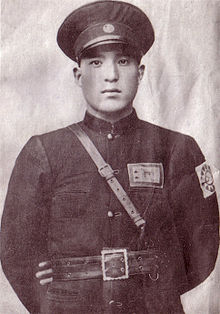
The Turkic Islamic Republic of East Turkestan was a short-lived breakaway Islamic republic founded on 12 November 1933; it was the first state to style itself an "Islamic republic." It was centred on the city of Kashgar in what is today Xinjiang Uyghur Autonomous Region. Sometimes referred to simply as the East Turkestan Republic (ETR), it was primarily the product of an independence movement of the Uyghur population living there and more broadly of Turkic-ethnicity in character, including Kyrgyz and other Turkic peoples in its government and its population.
The Soviet invasion of Xinjiang was a military campaign of the Soviet Union in the Chinese northwestern region of Xinjiang in 1934. White Russian forces assisted the Soviet Red Army.
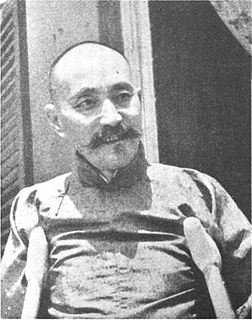
Ma Shaowu was a Hui born in Yunnan, in Qing Dynasty China. He was a member of the Xinjiang clique during the Republic of China.
The Charkhlik revolt was a Uighur uprising in 1935 against Chinese Muslim-dominated Tunganistan, which was administered by the New 36th Division. The Chinese Muslim troops quickly and brutally defeated the Uighur revolt. Over 100 Uighurs were executed. The revolt leader's family were made hostages.

Abdullah Bughra was a Uighur Emir of the First East Turkestan Republic. He was the younger brother of Muhammad Amin Bughra and older brother of Emir Nur Ahmad Jan Bughra. He commanded Uighur and Kirghiz forces during the Battle of Kashgar (1934) against the Chinese Muslim 36th Division. The Chinese Muslims were loyal to the Chinese government and wanted to crush the Turkic Muslim Uighurs and Kirghiz in revenge for the Kizil massacre. He also had Afghan bodyguards protecting him. He was killed in 1934 at Yarkand by Chinese Muslim troops under general Ma Zhancang. All of Abdullah's fighters were killed, but his body was never found, which later gave rise to speculations about his fate.
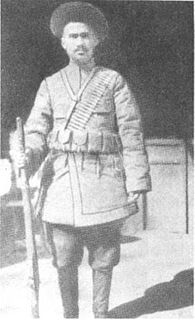
Nur Ahmad Jan Bughra was an Uighur Emir of the First East Turkestan Republic. He was the younger brother of Muhammad Amin Bughra and Abdullah Bughra. He commanded Uighur and Kirghiz forces during the Battle of Kashgar (1934) against the Chinese Muslim 36th Division. The Chinese Muslims were loyal to the Republic of China government and wanted to crush the Turkic Muslim Uighurs and Kirghiz in revenge for the Kizil massacre, in which Nur Ahmad Jan Bughra had taken part. He was killed on April 16, 1934, at Yangi Hissar by Chinese Muslim troops under generals Ma Zhancang and Ma Fuyuan. All of Nur Ahmad Jan's 2,500 Uighur and Kirghiz fighters were exterminated by the 10,000 strong Chinese Muslim army.

Timur Beg, also known as Timur Sijan, was a Uighur rebel military leader in Xinjiang in 1933. He was involved in the 1933 Battle of Kashgar and participated before in Turpan Rebellion (1932). He associated with the Turkic nationalist Young Kashgar Party and appointed himself as "Timur Shah". He and other Uighurs like the Bughra brothers wanted to secede from China. In August 1933 his troops were attacked by the Chinese Muslim 36th Division of the National Revolutionary Army under General Ma Zhancang. Timur was shot and killed in Kashgar.
The Battle of Tutong of 1934 occurred when Gen. Ma Zhongying's Chinese Muslim 36th Division was attacked by the Soviet Red Army on the banks of the frozen Tutung River. The battle took place over several days, and Soviet bombers used mustard gas. At one point the Chinese Muslim troops dressed up in sheepskins for camouflage in the snow, and stormed Soviet machine-gun posts with curved swords at a short range and defeated a Soviet pincer attack. Casualties were getting heavy on both sides before Ma Zhongying ordered a retreat.

Yulbars Khan, courtesy name Jingfu (景福), was a Uyghur chieftain and Kuomintang general during the Chinese Civil War. He entered the service in the Kumul Khanate of Muhammad Khan of Kumul and later his son Maksud Shah. He served as an advisor at the court, until when Maksud died in March 1930, governor Jin Shuren abolished the khanate. Yulbars then conspired with Khoja Niyaz and Ma Zhongying to overthrow Jin in the Kumul Rebellion. According to some people, Ma restrained Yulbars from traveling to Nanking to ask the Kuomintang for help, Ma earlier had an agreement with the Kuomintang that if he seized Xinjiang, he would be recognized by the Kuomintang as its leader.
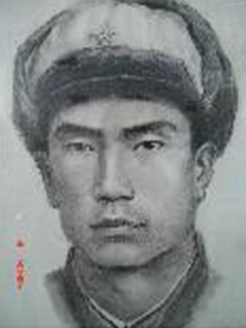
Ma Zhancang was a Hui Chinese Muslim general of the New 36th Division, who served under Generals Ma Zhongying and Ma Hushan. At the Battle of Kashgar (1933), he repulsed an attack of Uighurs led by the Syrian Arab Tawfiq Bay, wounding Tawfiq. He fought against Kirghiz and Uighur rebels and destroyed the First East Turkestan Republic after defeating Uighur and Kirghiz fighters at Kashgar, the Battle of Yarkand and the Battle of Yangi Hissar in 1934. He killed the Uighur leaders Timur Beg, Abdullah Bughra and Nur Ahmad Jan Bughra.
The Battle of Yangi Hissar was a confrontation that took place during the Xinjiang Wars. In April 1934 Gen. Ma Zhancang led the New 36th Division in an attack on Uighur forces at Yangi Hissar, wiping out the entire Uighur force of 500 and killing their leader, Emir Nur Ahmad Jan Bughra.
Ma Fuyuan was a Chinese Muslim general of the New 36th Division, who served under Generals Ma Zhongying and Ma Hushan. He was present with Ma Zhongying, Ma Shih-ming, Ma Shih-lu, and Ma Ho-ying during a meeting with Yulbars Khan. He fought against Uighur and Kirghiz rebels of the First East Turkestan Republic and against the pro-Soviet Uighur Khoja Niyaz at Aksu, driving Khoja Niyaz to Kashgar. He and General Ma Zhancang destroyed the First East Turkestan Republic after defeating Uighur and Kirghiz fighters at the Battle of Kashgar (1934), Battle of Yarkand, and Battle of Yangi Hissar Several British citizens at the British consulate were killed by the new 36th division. After entering Kashgar, Ma publicly proclaimed his allegiance to the Republic of China government in Nanjing and announced that Ma Shaowu was reappointed as the Taoyin of Kashgar.
Tawfiq Bay, or Sayyid Ahmad Tawfiq Bay Sharif Efendi, was a Syrian Arab traveler who had been in the service of King Ibn Saud of Saudi Arabia, eventually traveling to Xinjiang, Republic of China, in 1932. He was deported by the Chinese Muslim Daotai Ma Shaowu. On August 26 he arrived at Kashgar oases. He joined the Uighur and Kirghiz Turkic Muslim fighters of the First East Turkestan Republic, who were fighting against the Chinese Muslim forces of the 36th Division, who were loyal to the Republic of China government. Tawfiq was a Pan Islamist.
Pai Tzu-li was a Chinese Muslim general of the 36th Division, who served under Generals Ma Zhongying and Ma Hushan. He was the secretary to Ma Zhongying and his age was estimated to be about 40. He was then Chief of Staff to General Ma Hushan and persuaded him to attack Kashgar in 1937.
Ma Sheng-kuei was a Chinese Muslim general of the 36th Division, who served under Generals Ma Zhongying and Ma Hushan. His grew up in Gansu and Shaanxi in "bad company". Ma practiced banditry was noted for torturing his victims in Ningxia. He joined Ma Zhongying in 1933, and was appointed commander of the Tungan 2nd brigade at Khotan. His troops seized the Fayzabad-Maral-Bashi area. Facing the Soviet Red Army and Sheng Shicai's provincial troops, he defected while at Fazayabad and joined the forces of Sheng Shicai, turning against Ma Hushan's forces at Kashgar. Later Ma was stationed in Khotan and it is thought that he went back to Gansu. British diplomatic say he possibly received bribes from Sheng to join Sheng's forces.
Su Chin-shou was a Chinese Muslim general of the 36th Division, who served under Generals Ma Zhongying and Ma Hushan. He was the Chief of Staff of General Ma Zhancang and was appointed as one of the two tao-yins of Kashgar in May, 1933. He vacated the old city Yamen to join Ma Zhancang in the New City since his fellow Chinese Muslims were massacred at the Kizil massacre.
Ma Ju-lung was a Chinese Muslim general of the 36th Division, who served under Generals Ma Zhongying and Ma Hushan. He commanded the 1st Brigade.

The Kumul Rebellion was a rebellion of Kumulik Uyghurs from 1931 to 1934 who conspired with Hui Chinese Muslim Gen. Ma Zhongying to overthrow Jin Shuren, governor of Xinjiang. The Kumul Uyghurs were loyalists of the Kumul Khanate and wanted to restore the heir to the Khanate and overthrow Jin. The Kuomintang wanted Jin removed because of his ties to the Soviet Union, so it approved of the operation while pretending to acknowledge Jin as governor. The rebellion then catapulted into large-scale fighting as Khotanlik Uyghur rebels in southern Xinjiang started a separate rebellion for independence in collusion with Kirghiz rebels. Various groups rebelled, and were not united. The main part of the war was waged by Ma Zhongying against the Xinjiang government. He was supported by Chiang Kai-shek, the Premier of China, who secretly agreed to let Ma seize Xinjiang.
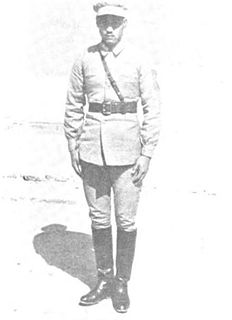
Ma Hu-shan was a Hui warlord and the brother-in-law and follower of Ma Chung-ying, a Ma Clique warlord. He ruled over an area of Southern Xinjiang, nicknamed Tunganistan by Westerners, from 1934 to 1937.
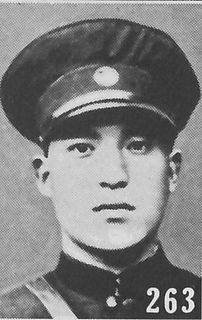
Ma Zhongying, also Ma Chung-ying, nickname Commander Ga, was a Hui Chinese Muslim warlord during the Warlord era of China. His birth name was Ma Buying. Ma was a warlord of Gansu Province in China during the 1930s. His alliance with the Kuomintang (KMT) brought his predominantly Chinese Muslim troops under the control of the KMT as the New 36th Division with Ma Zhongying as its commander. He was ordered to overthrow Jin Shuren, the governor of Xinjiang. After several victories over provincial and White Russian forces, he attempted to expand his territory into southern Xinjiang by launching campaigns from his power base in Gansu, but was stopped by Xinjiang warlord Sheng Shicai with Soviet support in 1934.
